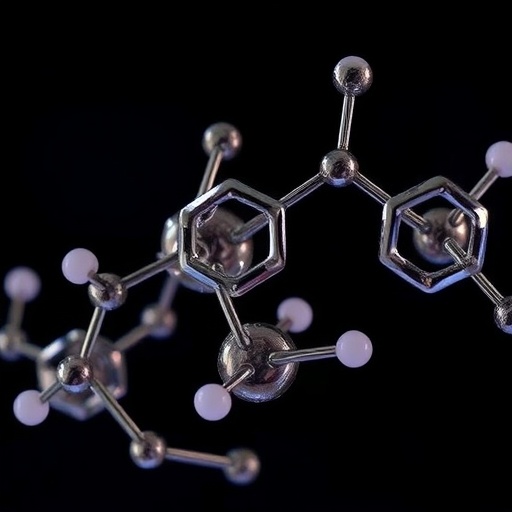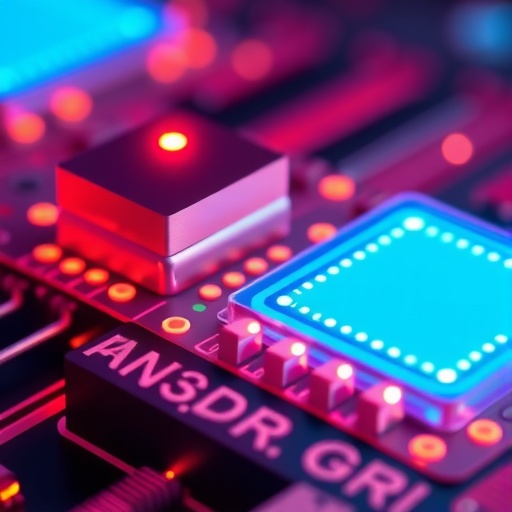In the realm of carbohydrate chemistry, complex carbohydrates play an indispensable role in various biological processes, underpinning vital functions such as cell signaling, immune response, and structural integrity. However, the intricate nature of these carbohydrates poses significant challenges in their isolation from natural sources, particularly when it comes to obtaining them in high purity and homogeneity. This has catalyzed the urgent necessity for advanced synthetic methodologies that can enhance our understanding of these essential biomolecules.
A prominent hurdle faced by researchers in this field is the quest for effective and general methods for the 1,2-cis-selective glycosylation of complex carbohydrates. Specifically, the assembly of 1,2-cis-2-aminoglycosides, which are critical building blocks in the formation of biologically relevant complex glycans and glycoconjugates, has remained elusive. Recent advances hint at promising solutions that may not only streamline but also revolutionize these processes, marking a significant step forward for both academic and industrial applications in glycoscience.
Amid the ongoing endeavors to tackle these issues, an innovative approach has emerged: an iron-catalyzed glycosylation technique that enables the rapid synthesis of 1,2-cis-aminoglycosidic linkages. The novelty of this method lies in its ability to utilize an iron catalyst, which is commercially available, alongside a bench-stable supporting ligand and amination reagents that can be synthesized from readily obtainable starting materials. This ease of access significantly lowers the barrier for non-experts seeking to engage in complex carbohydrate synthesis, providing an inclusive platform to advance research in this critical area.
What sets this catalytic process apart is its striking stereoselectivity and adaptability for a broad spectrum of glycosyl donors and acceptors. The glycosylation operates smoothly in a continuous fashion, allowing for scaling up to multigram quantities, which could facilitate not only academic research but also potential industrial applications in the pharmaceutical and biotechnology sectors. As scientists strive to develop therapeutics that target glycan-related pathways, such scalability is essential.
The key to the efficacy of this method lies in its unique mechanism. During the glycosylation process, the iron catalyst effectively activates both the glycosyl acceptor and an oxidant. This dual activation triggers a remarkable cooperative atom transfer between these moieties and the glycosyl donor, resulting in the formation of the conjugate in an exclusively cis-selective manner. Such mechanistic insights are pivotal; they not only elucidate how selectivity is achieved but also open doors for further explorations into related methodologies that could enhance glycosylation processes in general.
Operating under laboratory conditions, the glycosylation protocol is designed to be completed in several hours, making it a feasible addition to the repertoire of techniques available to researchers. This efficiency is critical, especially in a fast-paced research environment where time is often of the essence. By providing a method that combines high stereoselectivity with operational convenience, this approach complements existing 1,2-cis-selective glycosylation methods, broadening the toolkit available for glycan synthesis.
To delve deeper into the implications of this advancement, it is crucial to explore the wide-ranging applications that may benefit from such a development. The ability to synthesize 1,2-cis-aminoglycosides with high fidelity can have profound impacts in numerous fields, from drug development to vaccine research. Given that many infectious diseases exploit glycans to establish infections, advancing our understanding of these structures could lead to significant breakthroughs in targeted therapies and vaccines.
Furthermore, the versatility of this glycosylation method paves the way for future explorations into unexplored glycan structures. By enabling researchers to approach complex glycan synthesis with newfound efficiency and precision, the potential for innovative discoveries expands dramatically. This, in turn, could lead to enhanced therapeutic strategies that leverage glycosylation as a means to tailor bioactive molecules for specific interactions within biological systems.
In conclusion, the development of this iron-catalyzed, stereoselective glycosylation methodology represents a crucial advancement in the synthesis of complex carbohydrates. By addressing fundamental challenges associated with the assembly of 1,2-cis-aminoglycosides, it not only enhances our understanding of glycan structures but also significantly contributes to the field of glycoscience. As the research community continues to explore the vast possibilities that emerge from this technology, we may witness a new era of innovation that harnesses the biological roles of carbohydrates in unprecedented ways.
While more studies will be necessary to fully elucidate the vast potential of this method, the foundational work laying the groundwork for a broader application of 1,2-cis-selective glycosylation techniques is commendable. It is an exciting time for researchers in carbohydrate chemistry and related disciplines, as this advancement promises to propel the field forward, inspiring both curiosity and innovation in our pursuit of understanding complex carbohydrates.
This groundbreaking work paves the wave for new research opportunities and collaborations throughout the scientific community, generating excitement around the future applications of these findings in therapeutics and diagnostics. As iron-catalyzed glycosylation techniques gain traction, the possibilities to create more effective and targeted biomolecules are limitless. Indeed, the age of complex carbohydrate research may finally be primed for significant breakthroughs fueled by such innovative methodologies.
Ultimately, this contribution to carbohydrate chemistry not only represents a methodological triumph but also rekindles the excitement surrounding the exploration of glycans. Researchers are now equipped with a more reliable and versatile tool, one that offers the prospect of unraveling the biochemical mysteries tied to complex carbohydrates and their multifaceted roles in life processes. As the scientific community embraces this fresh perspective on glycosylation, the implications for future research, development, and potential clinical applications are boundless.
Subject of Research: Iron-catalyzed stereoselective glycosylation for complex carbohydrate synthesis
Article Title: Iron-catalyzed stereoselective glycosylation for 1,2-cis-aminoglycoside assembly
Article References:
Jiang, Z., Zhang, D., Wang, P. et al. Iron-catalyzed stereoselective glycosylation for 1,2-cis-aminoglycoside assembly.
Nat Protoc (2025). https://doi.org/10.1038/s41596-025-01263-4
Image Credits: AI Generated
DOI:
Keywords: Glycosylation, Complex Carbohydrates, Synthesis, 1,2-cis-aminoglycosides, Iron Catalyst, Stereoselectivity, Glycoscience.
Tags: 12-cis-selective glycosylationaminoglycosides in glyconjugatesbiologically relevant complex glycanschallenges in carbohydrate synthesiscomplex carbohydrate chemistryglycoscience advancementshigh purity carbohydrate isolationinnovative techniques in glycoscienceiron catalyst in carbohydrate synthesisiron-catalyzed glycosylation methodselective aminoglycoside synthesissynthetic methodologies for glycans





